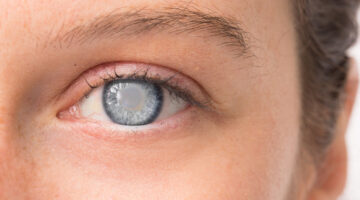Imagine looking through a foggy window all the time, and you’ll get an idea of what living with cataracts can be like. Cataracts are a common eye condition that affects millions of people worldwide, especially as they age. In this blog post, we’ll delve into what cataracts are, their causes, symptoms, and treatment options to help you gain a clearer understanding of this eye issue.
What Are Cataracts?
Cataracts are a clouding of the eye’s natural lens, which is responsible for focusing light on the retina, enabling clear vision. This clouding occurs gradually over time, leading to blurred or hazy vision, similar to looking through a frosted windowpane. Cataracts can affect one or both eyes and often develop as people age, although other factors can contribute to their formation.
Causes of Cataracts
While aging is a primary factor in cataract development, several other factors can increase the risk of this condition:
- Ultraviolet (UV) Radiation: Excessive exposure to UV rays from the sun without proper eye protection can accelerate cataract formation.
- Smoking and Alcohol: Both smoking and excessive alcohol consumption have been linked to a higher risk of cataracts.
- Diabetes: Individuals with diabetes are more susceptible to cataracts due to higher sugar levels affecting the eye’s lens.
- Family History: A family history of cataracts can increase your risk.
- Medications: Long-term use of certain medications, such as corticosteroids, can promote cataract development.
Common Symptoms
Cataracts often develop slowly, so you may not notice significant changes in your vision initially. However, as they progress, you may experience:
- Blurry or Hazy Vision: The most common and noticeable symptom of cataracts is a gradual decline in the clarity of your vision.
- Increased Sensitivity to Glare: Cataracts can cause heightened sensitivity to bright lights or glare, making nighttime driving challenging.
- Fading Colors: Colors may appear less vivid or yellowed as cataracts progress.
- Frequent Changes in Eyeglass Prescription: You might find that your prescription eyeglasses need frequent adjustments to maintain clear vision.
Treatment Options
Fortunately, cataracts can be effectively treated through surgery. Cataract surgery is one of the most common and successful procedures performed worldwide. Here’s an overview of what to expect:
- Pre-Operative Assessment: Your eye doctor will evaluate your overall eye health and discuss the procedure with you.
- Anesthesia: Local anesthesia is typically used to numb the eye, ensuring you are comfortable and pain-free during the surgery.
- Cataract Removal: During the surgery, the clouded lens is removed and replaced with an artificial intraocular lens (IOL).
- Post-Operative Care: After the procedure, you may be prescribed eye drops to aid in the healing process. Most patients experience improved vision within a few days.
Cataracts are a common eye condition, but they don’t have to cloud your vision indefinitely. With advancements in medical technology, cataract surgery is a safe and effective way to restore clear vision and improve your overall quality of life. If you suspect you have cataracts or have noticed changes in your vision, consult with an eye care specialist to explore your treatment options and regain the clarity you deserve.






